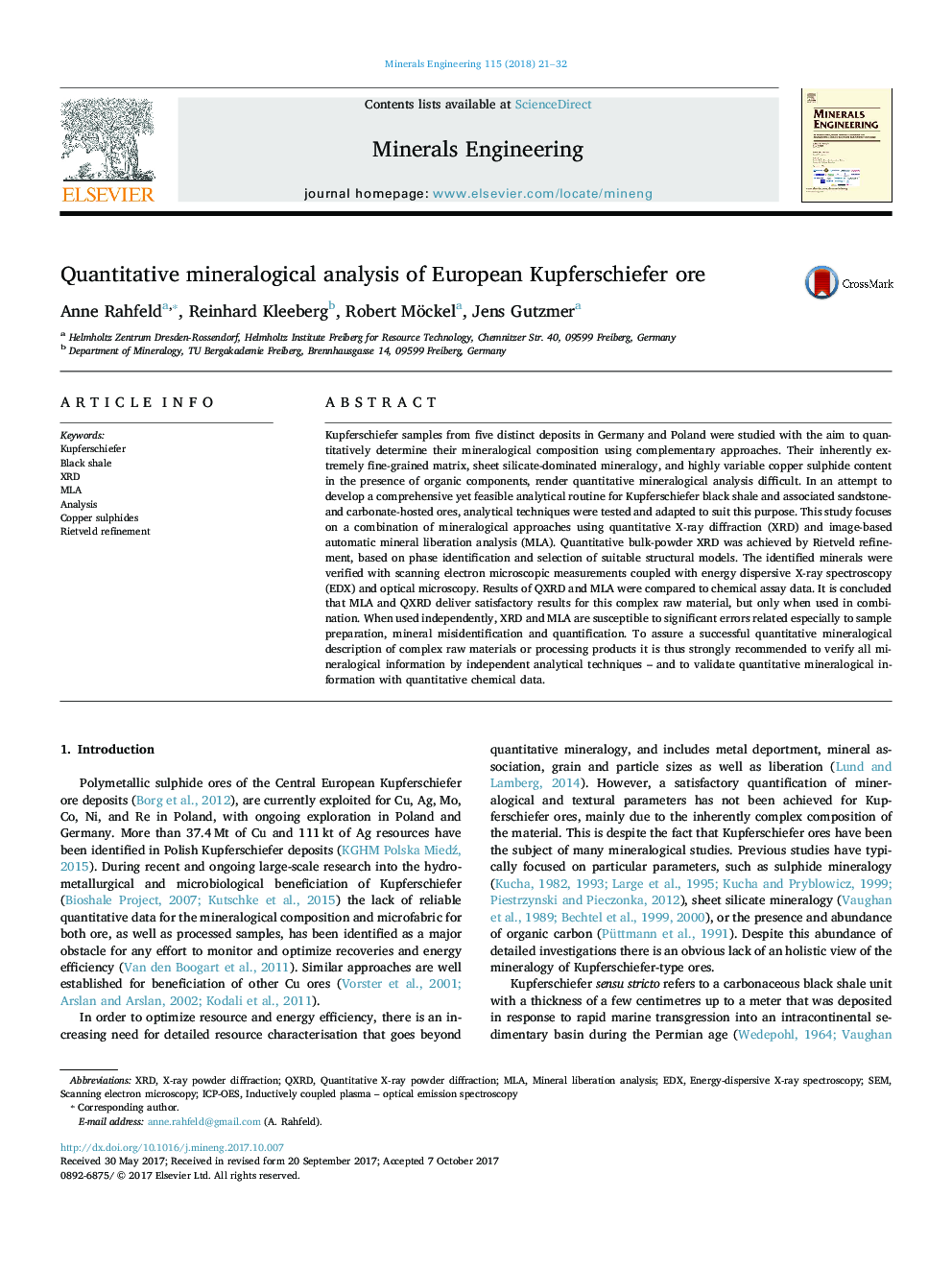| Article ID | Journal | Published Year | Pages | File Type |
|---|---|---|---|---|
| 4910092 | Minerals Engineering | 2018 | 12 Pages |
â¢Development of a quantitative mineralogical analysis for Kupferschiefer ores.â¢Evaluation of the effects of MLA instrument settings on mineral identification.â¢Comparison of QXRD with MLA results.â¢Geochemical validation.
Kupferschiefer samples from five distinct deposits in Germany and Poland were studied with the aim to quantitatively determine their mineralogical composition using complementary approaches. Their inherently extremely fine-grained matrix, sheet silicate-dominated mineralogy, and highly variable copper sulphide content in the presence of organic components, render quantitative mineralogical analysis difficult. In an attempt to develop a comprehensive yet feasible analytical routine for Kupferschiefer black shale and associated sandstone- and carbonate-hosted ores, analytical techniques were tested and adapted to suit this purpose. This study focuses on a combination of mineralogical approaches using quantitative X-ray diffraction (XRD) and image-based automatic mineral liberation analysis (MLA). Quantitative bulk-powder XRD was achieved by Rietveld refinement, based on phase identification and selection of suitable structural models. The identified minerals were verified with scanning electron microscopic measurements coupled with energy dispersive X-ray spectroscopy (EDX) and optical microscopy. Results of QXRD and MLA were compared to chemical assay data. It is concluded that MLA and QXRD deliver satisfactory results for this complex raw material, but only when used in combination. When used independently, XRD and MLA are susceptible to significant errors related especially to sample preparation, mineral misidentification and quantification. To assure a successful quantitative mineralogical description of complex raw materials or processing products it is thus strongly recommended to verify all mineralogical information by independent analytical techniques - and to validate quantitative mineralogical information with quantitative chemical data.
